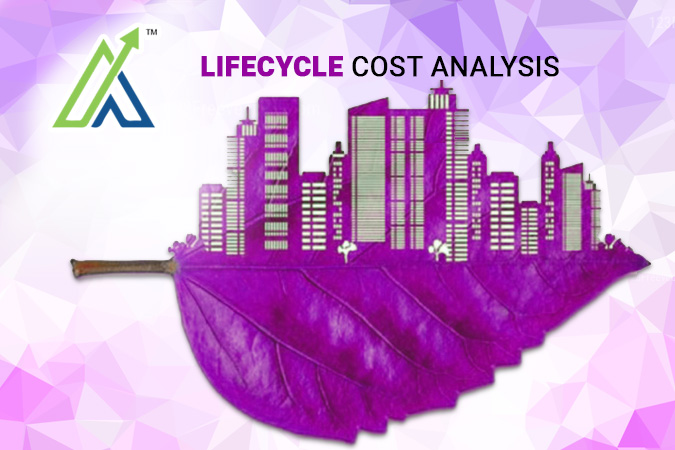It’s crucial to replace assets wisely in the competitive world of Indian company. It is not enough to simply glance at the cost and call it a day. Herein lies Lifecycle Cost Analysis (LCCA), a technique that delves further into the true cost of asset ownership. Let’s examine how LCCA functions and why it is so revolutionary in determining if asset replacement is economically sound.
What’s Lifecycle Cost Analysis (LCCA)?
LCCA looks at the total cost of owning an asset—from buying it, running it, fixing it, to finally getting rid of it. This full-picture view helps you make smarter choices by considering the long haul, not just the upfront cost.
Key Parts of LCCA:
- Initial Costs: The price to buy and install the asset.
- Operation Costs: Daily running expenses like energy and labor.
- Maintenance Costs: Costs for regular check-ups, repairs, and parts.
- Disposal Costs: The expense of getting rid of the asset at the end of its life.
Why Use LCCA for Asset Replacement?
- Save Money Long-term: Looking at the total cost, you might find options that cost more upfront but save you a ton on running and fixing costs.
Example: An Indian factory might splurge on energy-efficient machines. High initial cost, but lower electricity and maintenance bills later. - Manage Risks: LCCA shows potential risks like rising maintenance costs or fluctuating energy prices, so you can plan ahead.
Example: A delivery company might swap old diesel trucks for new CNG ones to dodge rising fuel costs and meet emission standards. - Make Smart Decisions: LCCA gives you hard data to compare different assets, leading to better choices.
Example: An IT firm in Bengaluru might compare the costs of upgrading servers vs. moving to the cloud, looking at long-term savings on energy and maintenance. - Hit Sustainability Goals: Considering disposal and environmental impact in LCCA helps align with green goals.
Example: A hotel chain might go for solar water heaters over electric ones, cutting energy use and supporting eco-friendly practices.
How to Implement LCCA?
- Collect Data: Gather info on all cost aspects of current and new assets.
- Analyze: Use tools or experts to perform LCCA, comparing total costs of different options.
- Decide: Use LCCA results to decide if you should keep, upgrade, or replace an asset.
- Monitor: Regularly update your LCCA to reflect changes in costs, usage, and regulations.
Challenges and Solutions
- LCCA isn’t all smooth sailing, especially in India:
- Getting Accurate Data: It can be hard to get accurate information. Spend money on good data tools and maybe even hire experts.
- Solution: For correct info in real time, use the Internet of Things (IoT) and data analytics.
- Focus on Long-term Over Short-term: Many only look at the short-term costs and miss the long-term rewards.
- Solution: For a change in focus, teach stakeholders about the big-picture benefits of LCCA.
- Regulatory Changes: Laws that change often can make it hard to use the LCCA.
- Solution: Review and make changes to the LCCA on a regular basis to stay in line with new rules.
Questions to Understand your ability
Qus: What’s the main focus of Lifecycle Cost Analysis (LCCA)?
- Just the initial purchase price
- Every single cost from buying to ditching the asset
- The company’s profit margins
- The environmental impact alone
Qus: Which cost isn’t a part of LCCA?
- Initial Costs
- Operation Costs
- Marketing Costs
- Maintenance Costs
Qus: How does LCCA help with risk management?
- By guessing future sales
- By highlighting risks like rising repair costs
- By boosting product prices
- By hiring more staff
Qus: Why would an Indian factory go for energy-efficient machines with a high upfront cost?
- To dodge government taxes
- To slash electricity and maintenance bills over time
- To cut down on employees
- To speed up production
Qus: What should businesses use for real-time, accurate data in LCCA?
- Old-school paper records
- IoT and data analytics
- Manual math
- Employee feedback forms
Conclusion
Life Cycle Cost Analysis is about imperative for any Indian business trying for wise asset substitution. LCCA is beneficial in saving money, controlling risks and enhancing decisions making in addition to the goal of attaining sustainable asset management. Every now and then LCCA comes with some of the following difficulties but if implemented appropriately it assist in achieving huge economic and
operational advantages that assists businesses in sustaining competitive operations in the current fast-growing market.
FAQ's
LCCA looks at all the costs of having an asset, from purchasing it to cleaning it up and finally getting rid of it. It’s about making better, longer-term choices by seeing the big picture.
Because it saves you cash in the long run, handles risks, helps you make smart choices, and hits those sustainability goals by looking at all costs involved.
The main parts? Start-up costs, running costs, maintenance costs, and disposal costs.
LCCA gives you hardcore data to compare assets, showing the total cost over its life, not just the upfront hit.
You bet! Imagine an Indian factory dropping serious cash on energy-efficient machines. The upfront hit is big, but down the line? Huge cuts on electricity and maintenance bills. Total game-changer.
LCCA spots those nasty risks like skyrocketing repair costs or wild energy prices. Plan ahead, dodge those bullets, and keep your budget intact.
Simple. Use IoT and data analytics for real-time, spot-on data. Invest in these tools, and your LCCA is rock-solid. No guesswork, just facts.
Obstacles include gaining proper information, keeping the vision on a prolonged return on investment rather than a short-term cost, and working under constantly changing rules. Measures include acquiring sound data gadgets, sensitizing all the concerned parties, and updating LCCA frequently in order to meet the new set rules and requirements.

